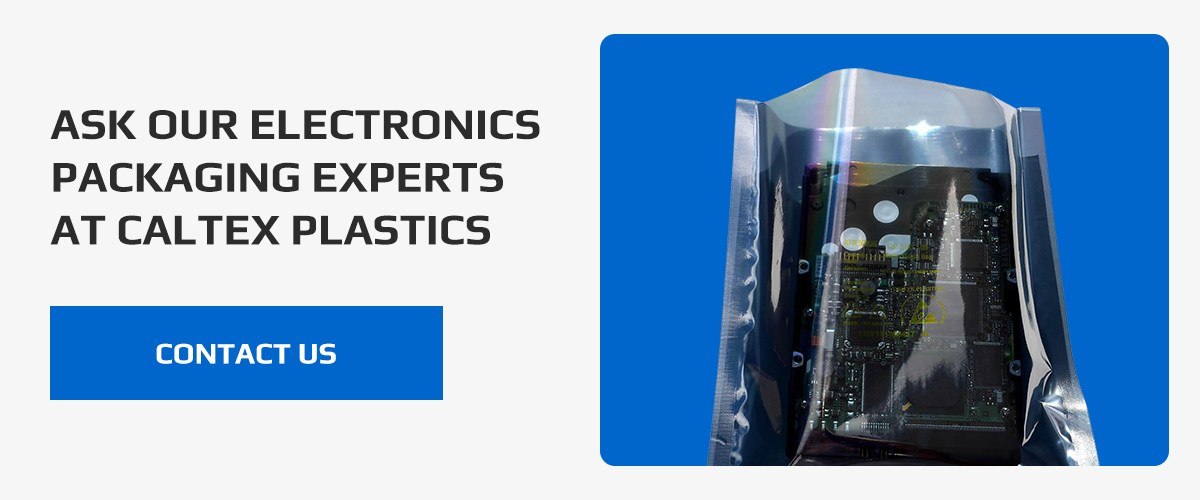HOW TO PREVENT LOGISTICS DAMAGE TO ELECTRONICS
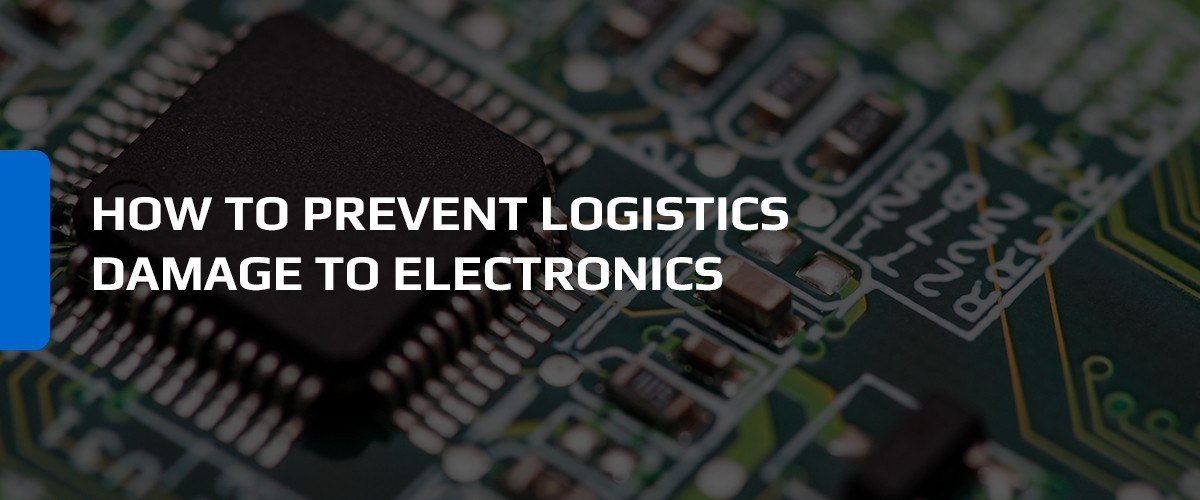
Posted: updated March/April 2020 Author: Jim Higgs
TABLE OF CONTENTS
What Can Damage Electronics During Shipping?
What Is the Best Method for Safely Shipping Electronics?
What Are the Different Levels of Electronic Packaging?
What Is the Best Packaging Material for Electronics?
Ensuring Pallet Integrity
What Shipping Companies or Methods Are Best for Electronics?
Keeping electronics safe during shipping is essential to avoiding product and profit loss. Unlike non-electronic deliveries, electronic devices require more than protection from impacts. They also need shielding against things that could damage the delicate electrical components inside. To minimize cargo damage when sending electronics, use proper packaging. With a sturdy container to protect the electronics from external damage, the delivery methods used will play less of a role in protecting the devices.
WHAT CAN DAMAGE ELECTRONICS DURING SHIPPING?
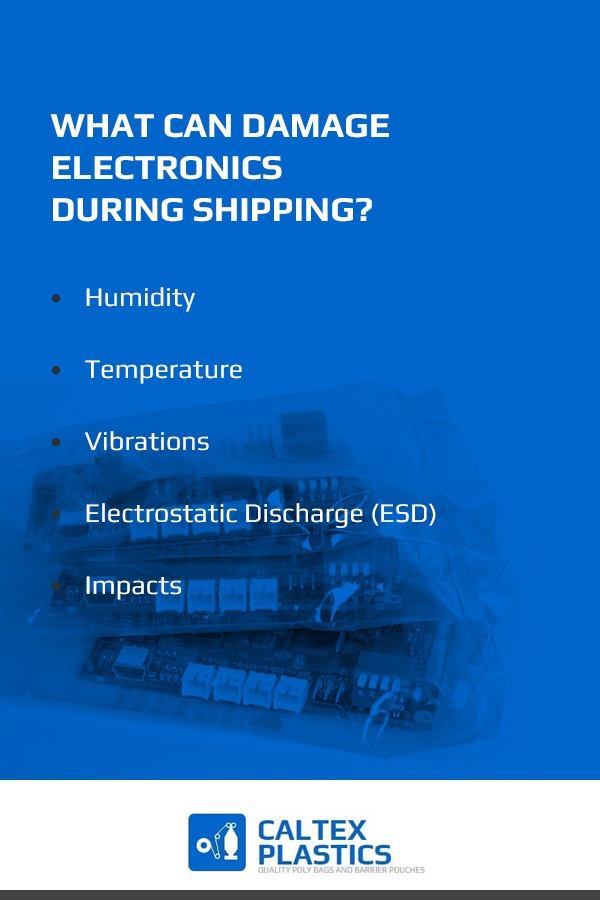
causes of damage during transit. Because electronics require a carefully controlled climate, humidity and temperature fluctuations can lead to damage. Additionally, vibrations, electrostatic discharge (ESD) and impacts can also affect the integrity of the goods inside the containers. Use a damage report from a prior shipment to identify the most common types of harm that can befall electronics through your carrier of choice. The cause of damage to the cargo likely included one of the following:
HUMIDITY
Humidity, or how much moisture is present in the air, can negatively affect electronics during shipping. For instance, static builds in exceptionally dry conditions. However, with humidity too high, wet damage may occur from condensation inside the packaging.
Keep humidity the electronics have exposure to between 40% and 80%. Below 40% increases the chances of static electricity buildup. Over 80% raises the chances of moisture damage. Use moisture barriers to protect against wet damage. Enclose electronics in static shielding bags, static dissipating bags or conductive bags to protect the devices from low humidity and static electricity.
TEMPERATURE
Extreme heat and cold can play havoc with shipped electronics. Because senders don’t know the conditions of the locations where the product goes through, preparing for any situation can minimize cargo damage. For instance, both hot and cold temperatures can reduce electronic battery or hard drive lives.
Typical hard drives have storage temperature ranges of negative 40 degrees Celsius to 70 degrees Celsius (negative 40 degrees Fahrenheit to 158 degrees Fahrenheit). While the high end of this range exceeds the normal temperature encountered in most situations, the lower end is possible. Freezing temperatures can impact hard drive integrity, and subfreezing temperatures below negative 40 degrees C or F do happen in various parts of the world. Shipping through or to locations with these frigid conditions requires extra insulation around the electronics to keep them in the safe non-operating temperature range.
Batteries have an even tighter temperature storage range of 5 degrees Celsius to 20 degrees Celsius (14 degrees Fahrenheit to 68 degrees Fahrenheit). Therefore, storage conditions for laptops or other electronics that have batteries included in the shipment must focus on this narrower range. Batteries stored too cold or too warm have shorter lifespans. In some cases, excessive heat can cause the battery to undergo runaway overheating and combustion.
VIBRATIONS
Vibrations can occur from a shipping vehicle’s engine. For instance, trucks and planes both transmit vibrations from their engines, wheels and movement. These vibrations can cause small shocks over an extended time to the object, causing serious damage. Protecting the electronics with adequate cushioning and double boxing can reduce the effect of vibrations on the devices.
ELECTROSTATIC DISCHARGE (ESD)
Vibrations can also contribute to electrostatic discharge (ESD). ESD happens when one object builds an electrostatic charge and releases it to another object that does not have a charge or has a lower charge. The resulting shock delivered creates an arc of electric charge, which can ruin sensitive electronic devices.
An electrostatic charge can build in two main ways. The first is through vibrations or materials rubbing against each other. Another method is through electrostatic induction. This phenomenon occurs when a conductive material rests near an item with an electrical charge. The conductor builds a charge and releases it once it touches another conductive object.
To protect against a buildup of static electricity, shipping packaging must either safely dissipate the static electricity or shield the products from accumulating static electricity.
IMPACTS
When an object hits the ground from being dropped or strikes another from falling during shipping, the resulting impact shocks the contents inside the package. Electronics have a shock sensitivity that is as delicate as glassware or unfired clay. Therefore, protecting them against impact damage requires as much care as glassware would require.
WHAT IS THE BEST METHOD FOR SAFELY SHIPPING ELECTRONICS?
The best method for safely shipping electronics starts with choosing the correct packaging and picking a method to get the products to their destination with as little disruption as possible. Packing electronics safely prevents the most common causes of container damage from affecting the electronics.
SAFELY PACKAGING ELECTRONICS FOR SHIPPING
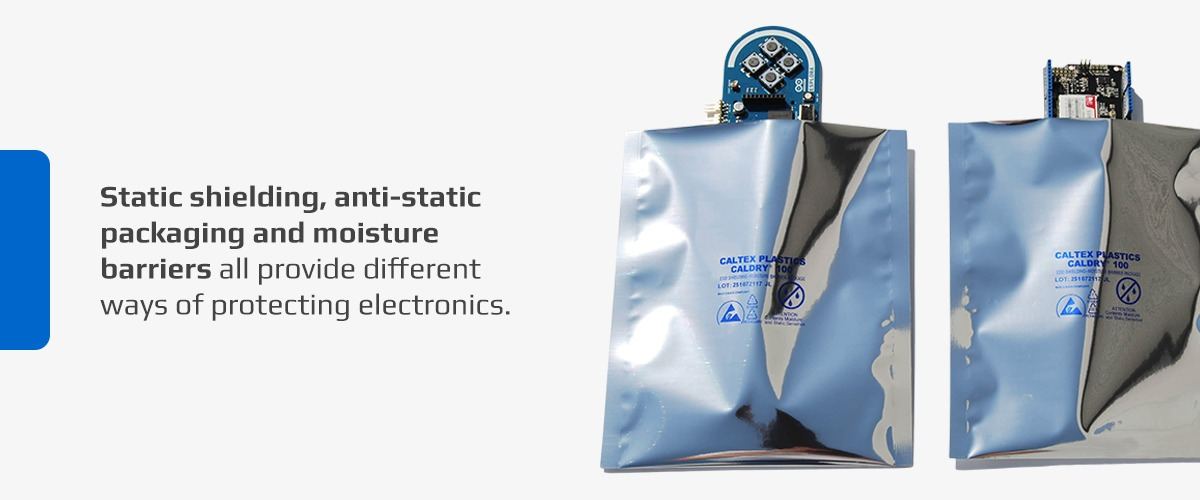
Safely packaging electronics for shipping includes using several steps. First, consider the containers used to hold the electronics. The electronics should rest in one container that holds the devices inside secure. This container may be the retail packaging. However, to further protect from impact damage and vibrations, place this container into a second, larger container with cushioning material to absorb movements and external forces.
SECURE BATTERIES
Whenever shipping electronics, always separate and secure the batteries. Cover battery terminals to prevent them from contacting conductive materials.
When shipping goods with rechargeable lithium-ion batteries, commonly used in cell phones and laptops, several restrictions apply, depending on the shipper used. For example, the United States Postal Service (USPS), allows no more than two batteries of up to 100 watt-hours shipped with the equipment. The USPS additionally requires batteries to have rigid packaging to prevent crushing and packaging that protects the battery from short-circuiting. Lastly, sending lithium-ion batteries through the mail requires a Department of Transportation (DOT) label to indicate the battery inside and its hazardous nature.
Similarly, FedEx requires lithium-ion batteries totally enclosed and packed in cushioning material with non-conductive packaging to create layers. Since FedEx ships many goods via plane, the label on the container needs to meet standards from the International Air Transport Association (IATA) for indicating a hazardous lithium-ion battery.
To assist customers with correctly shipping lithium-ion batteries via UPS, the company provides flow charts for how to do so via either air or ground.
SEPARATE CORDS AND ACCESSORIES
Separate all cords and accessories from the electronics for shipping. Secure these so they don’t contact other electronic components or cause impact damage. Putting these into separate boxes inside the main shipping container can keep these parts safe while protecting other goods in the shipment. Clearly label each container for cords and accessories to make the process of unpacking easier for the purchaser.
PROPER LABELING
To ensure correct handling of electronics in transit, use labels that indicate the contents are fragile and static sensitive. For shipping lithium-ion batteries, indicate the inclusion of this type of hazard inside the shipping container on the label, too. The IATA offers a flow chart to identify the correct type of label to use when shipping packages that contain lithium batteries.
If reusing containers, remove old labels and never affix labels over flaps, seams or around corners of the container.
CORRUGATED CARTONS
Using corrugated cartons offers better protection for electronics than cardboard. These cartons have an internal and external layer. Between these layers is a central core of material inside that has a ruffled configuration for absorbing impacts. The structure of the carton has a lower chance of crushing, and it supports various weights while offering some moisture protection. Corrugated cartons are reusable and better for shipping electronics than basic cardboard containers.
SPACERS
Spacers, or void filler, may include using cost-effective, recyclable air pillows. This protective matter absorbs shocks and vibrations that occur between the outer and inner containers. Other spacer options include packing peanuts, paper and other forms of cushioning. Make sure to use some type of filler material between the outer container and the electronics-containing inner boxes to provide impact and vibration protection.
ENSURING PALLET INTEGRITY
Pallet integrity is important because damaged pallets do not support their loads as well as intact pallets. If sending materials in bulk, always check that the pallets are sturdy and without defects. Intact pallets minimize cargo damage. Shippers should take appropriate measures to stack pallets properly, too. They should only place lighter pallets on top of heavier ones to prevent crushing damage.
Thermal covers on pallets can also help to prevent cold damage to electronics by blocking the flow of cold air from beneath and the sides of the containers.
ESD PACKAGING
ESD packaging protects the electronics from damage caused by static electricity discharging to the device. While containing the electronics in static shielding bags can help, additional measures include using lidded and shielded containers to hold the electronics inside.
WHAT ARE THE DIFFERENT LEVELS OF ELECTRONIC PACKAGING?
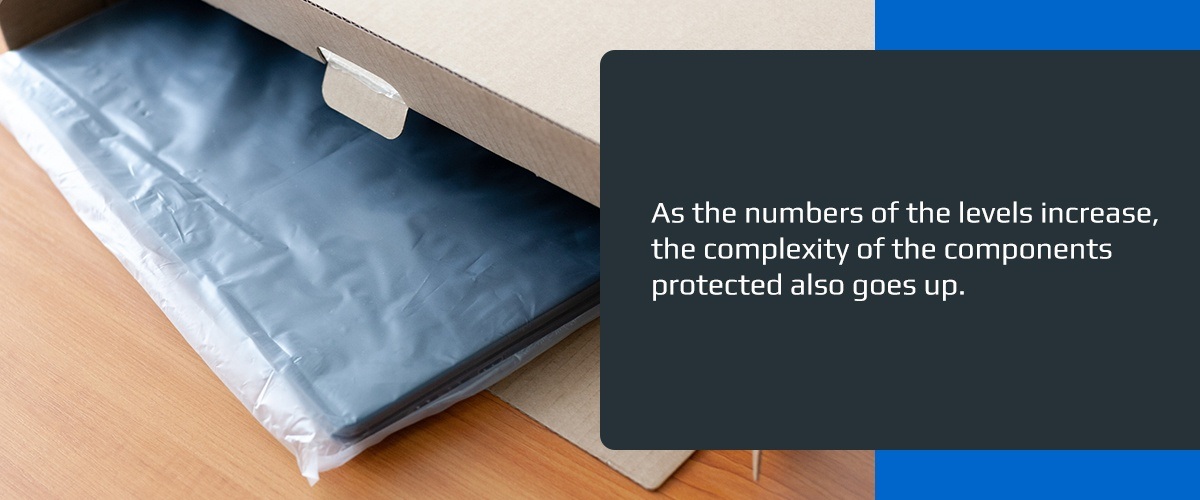
Electronic packaging has different levels that correlate to the parts of the electronic device protected. As the numbers of the levels increase, the complexity of the components protected also goes up. Naming packaging based on the parts it protects enables producers to pack electronic goods for shipment more rapidly.
- Level 0: Level 0 packaging offers protection for the most basic components of the system: the semiconductors and chips.
- Level 1: Electronic components require level 1 packaging. This second level represents the second-least complex parts in the system.
- Level 2: For packaging only printed circuit boards, manufacturers use level 2 electronic packaging.
- Level 3: Wiring boards and assemblies need more complex packaging, which is level 3.
- Level 4: Groups of assembles or modules require level four electronic packaging to protect cargo from shipping damage.
- Level 5: Lastly, the most complex type of packaging is level 5. This electronic packaging protects an entire electronic device or multiple modules.
WHAT IS THE BEST PACKAGING MATERIAL FOR ELECTRONICS?
The best packaging material for electronics depends on the desired level of protection against the buildup of static electricity and the budget. Static shielding, anti-static packaging and black conductive material all provide different ways of protecting electronics from excessive exposure to static electricity.
STATIC SHIELDING
Static shielding offers the gold standard of transparent ESD protection. In addition to its shielding qualities, it is also static dissipative. This type of shielding also requires keeping the electronics completely enclosed inside the sealed bag. An open bag or one that has a cut in it does not offer the same level of static protection as an intact bag. Sharp edges on electronics or improperly closed bags could compromise the performance of static shielding.
ANTI-STATIC BAGS
Anti-static bags are a cost-effective alternative to static shielding. While they do not offer the same performance as static shielding bags, they are static dissipative and prevent static build-up.
MOISTURE BARRIER
Moisture barrier bags offer the ultimate protection for electronic components and assemblies. They have more physical strength than the other options, while providing static shielding, static dissipative and moisture and oxygen barrier qualities.
WHAT SHIPPING COMPANIES OR METHODS ARE BEST FOR ELECTRONICS?
The best method for shipping electronics depends on where they will go and the number of goods sent. Sending bulk orders by sea internationally may cost less than sending them via air. When using best practices for packaging and labeling, the top shipping methods can include land, sea or air and FedEx, UPS or USPS. Proper packaging matters more than the delivery method. Focus on correctly packaging electronics, and find a shipping method to fit your budget.
Be sure to check the requirements for sending electronics through FedEx, UPS or USPS if sending lithium batteries with the orders, especially because shipping requirements can change. Each organization has its specific requirements for labeling the products and declaring the presence of hazardous batteries inside.
Whatever shipping method you use, always keep meticulous records of the shipping company, order sent, expected delivery time and whether it arrived. Follow up with the shipping company on orders that do not arrive as intended. They can tell you if the order was lost, damaged or delayed. Once you know what happened to the order, you can take action, if necessary, to get compensation and plan for sending a replacement to your customer.
Lastly, check with the shipper to see if they provide insurance, especially for expensive electronics shipments. Insurance protects you from loss if the shipper damages your products even if you do everything possible to package the electronics properly.
ASK OUR ELECTRONICS PACKAGING EXPERTS AT CALTEX PLASTICS
Avoiding damage to electronics in shipping starts with having the correct packaging to protect the items. For electronics, that means preventing electrostatic discharge buildup. To find this type of specialty packaging for your electronics shipping, contact us at Caltex Plastics. You will find static shield bags, anti-static bags, black conductive material and more. Let us help you find the right products for your shipping when you consult with our electronics packaging experts.
